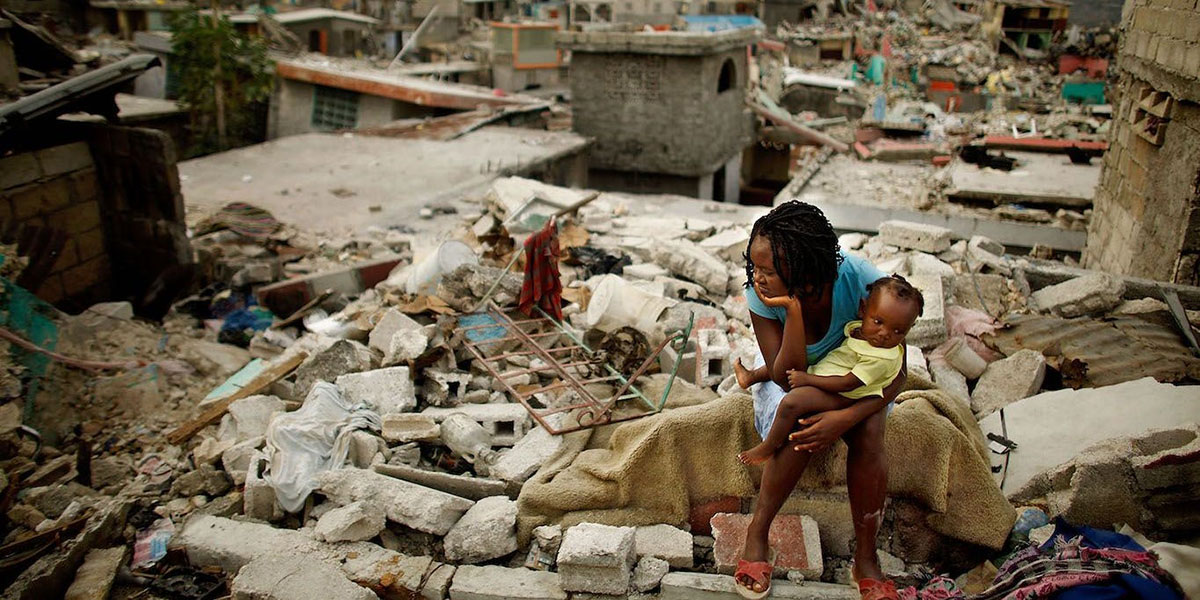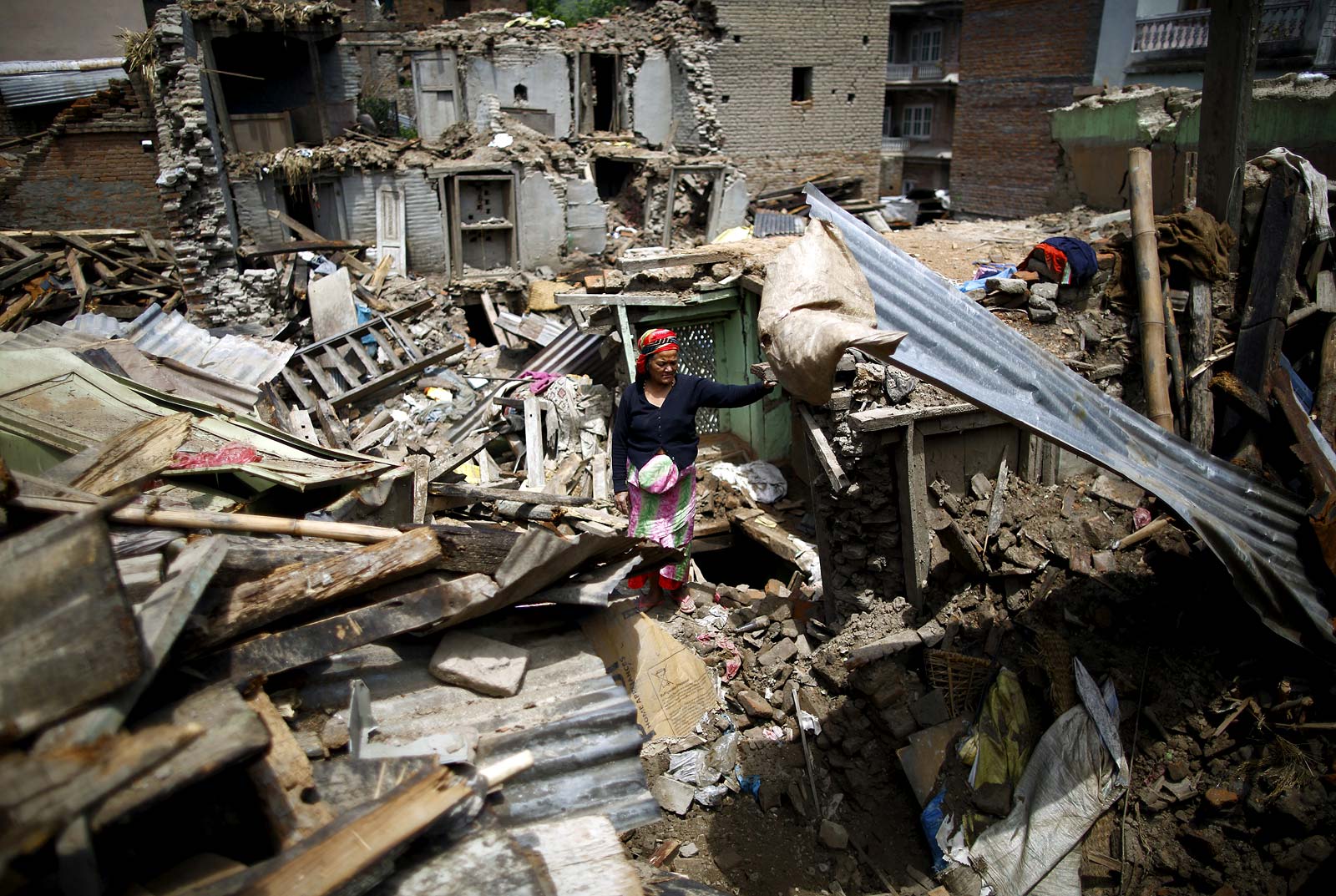Before: Are You Ready for a Rumble?
Earthquakes strike suddenly, violently, and without warning. Identifying potential hazards ahead of time and planning in advance can reduce the dangers of serious injury or loss of life from an earthquake. Repairing and reinforcing building foundations, anchoring overhead lighting fixtures to the ceiling, securing furniture and other objects to walls and floors, and following local seismic building standards will help reduce the impact of earthquakes.
Many injuries suffered during earthquakes result from items falling or shifting due to the shaking of the earth. Identifying potential hazards prior to an earthquake can protect you and your family. Do an inventory of your house and where you work. Anything that can move or fall during a quake should be placed in a closed cabinet or a secondary container. Anything that can’t be put elsewhere should be securely fastened down or, for objects such as bookcases, attached to the wall. Avoid hanging pictures or mirrors near beds or places where people sit.
After an earthquake, you might not have access to water, food, electricity, or other necessities for up to a week. Creating a disaster supply kit will help you get through the aftermath of an earthquake. Store enough water, food, and other basic items to meet your needs for at least 72 hours. Keep the kit in a place where you spend most of your time so that it will be easily accessible if an earthquake strikes.
It is also a good idea to develop an emergency communication plan. Do not rely on cell phones or other devices that require electricity. Develop a plan for reuniting after the disaster in case family members are separated from one another during an earthquake. Ask an out-of-state relative or friend to serve as the family contact. After a disaster, it's often easier to call long distance than locally. Make sure everyone in the family knows the name, address and phone number of the contact person.
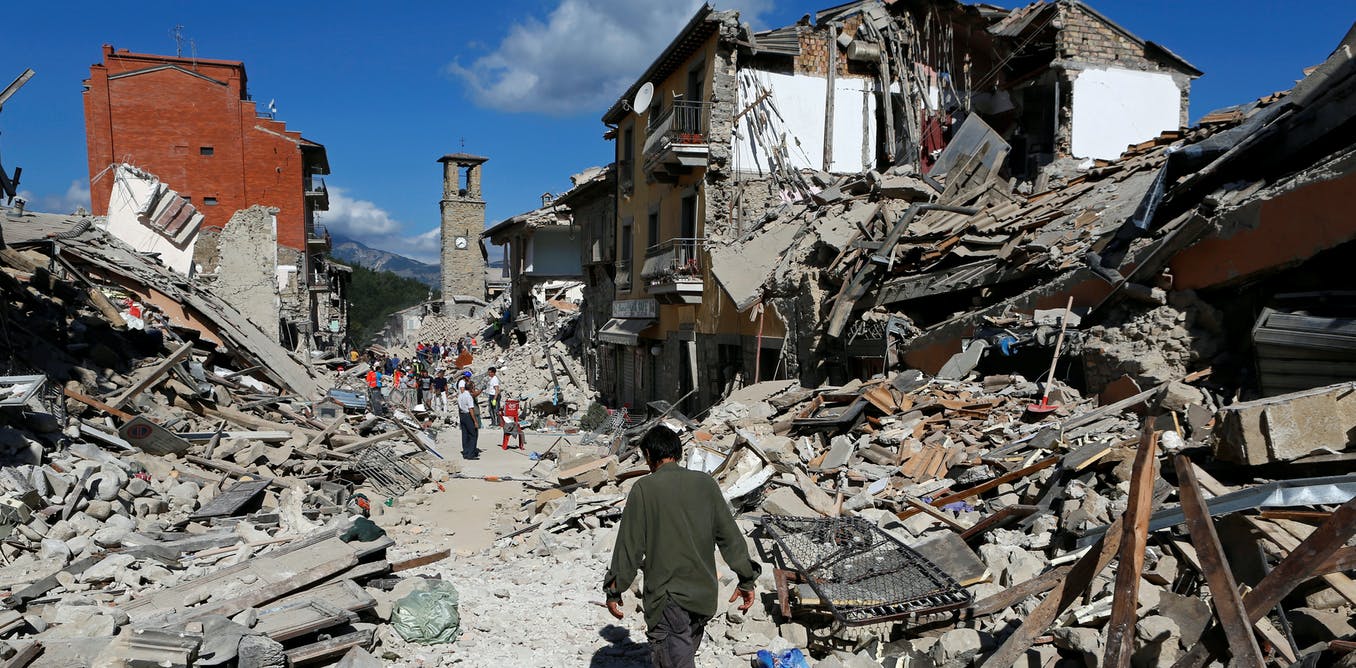
Everyone has a responsibility to protect their homes and their families. Since no one can predict with certainty when an earthquake will happen, it is important to get prepared in advance. This involves three basic steps:
- Find out what to do before, during, and after an earthquake.
- Make a family emergency plan, so that everyone knows what to do, and where to go in case of an emergency.
- Get an emergency kit, so that you and your family can be self-sufficient for at least 72 hours.
Planning for an earthquake will also help prepare you for many other types of emergencies. After reading this guide, keep it in a handy spot, such as in your emergency kit.
What to expect during an earthquake
Small or moderate earthquakes
- These can last only a few seconds and represent no emergency risk.
- Ceiling lights may move and some minor rattling of objects may occur in your home.
- You may feel a slight quiver under your feet if you are outside.
- If you are close to its source, you may hear a loud bang followed by shaking.
Large earthquakes
- These can last up to several minutes and constitute a natural disaster if its epicentre is near a densely populated area, or its magnitude sufficiently large for the region.
- The ground or floor will move, perhaps violently.
- Whether far away or close to the source, you will probably feel shaking followed by a rolling motion, much like being at sea.
- If you are far away from the source, you might see swaying buildings or hear a roaring sound.
- You may feel dizzy and be unable to walk during the earthquake.
- If you live in a high rise or a multi-storey building, you may experience more sway and less shaking than in a smaller, single-storey building. Lower floors will shake rapidly, much like residential homes. On upper floors, movement will be slower but the building will move farther from side to side.
- Furnishings and unsecured objects could fall over or slide across the floor or be thrown with damaging force across the room.
- Unsecured light fixtures and ceiling panels may fall.
- Windows may break.
- Fire alarms and sprinkler systems may be activated.
- Lights and power may go off.
HOW TO SURVIVE

Step 1: Know the Risks and Get Prepared
To get prepared for an earthquake, you should know the risks specific to your community and your region to help you better prepare. To find out what the hazards are in your region, visit the ‘Know the risks' section of the GetPrepared.ca website.
Before an Earthquake
Go through your home, imagining what could happen to each part of it, if shaken by a violent earthquake. Check off the items that you have completed in this list.
- Teach everybody in the family (if they are old enough) how to turn off the water and electricity.
- Clearly label the on-off positions for the water, electricity and gas.
- Repair loose roof shingles.
- Secure water heaters to wall studs or masonry using a bracing kit, to reduce the possibility of the heater falling and rupturing gas and water connections.
- Secure major appliances to walls, such as refrigerators.
- Secure costly and heavy electronics.
- Secure the tops of top-heavy furniture to a wall by anchoring to studs and using flexible fasteners. Keep heavy items on lower shelves.
- Secure expensive or fragile items that if damaged would be a significant loss.
- Affix mirrors, paintings and other hanging objects securely, so they won't fall off hooks.
- Locate beds and chairs away from chimneys and windows. Don't hang heavy pictures and other items over beds. Closed curtains and blinds will help stop broken window glass from falling on beds.
- Put anti-skid pads under TVs, computers and other small appliances, or secure them with Velcro or other such product.
- Use child-proof or safety latches on cupboards to stop contents from spilling out.
- Keep flammable items and household chemicals away from heat and where they are less likely to spill.
- Secure items in the garage to reduce hazardous material spills and damage to vehicles.
- Consult a professional for additional ways to protect your home, such as bolting the house to its foundation and other structural mitigation techniques.
- If you live in an apartment block or a multi-storey building, work with your building manager or condominium board to decide how best to “quake-safe” your unit. Seek advice from professionals (building engineers, emergency preparedness authorities) if you are unsure about what to do.
- If you live in a mobile home, you can leave the wheels on the mobile home to limit its fall. Or, you can install a structural bracing system to reduce the chance of your unit falling off its supports. Ensure the awning on your home is securely supported and fastened to the unit. For information on the best way to brace your unit, contact your local mobile home dealer or a mobile home owner's association.
- Review your Emergency Plan with your family (see Step 2 for more information).
- Have an emergency kit that will sustain you and your family for at least 72 hours (see Step 3 for more information).
- Discuss earthquake insurance with your insurance broker. Check your coverage – it could affect your financial ability to recover losses after an earthquake.
During an earthquake
Wherever you are when an earthquake starts, take cover immediately. Move a few steps to a nearby safe place if need be. Stay there until the shaking stops.
If you are indoors: “DROP, COVER AND HOLD ON”
- Stay inside.
- Drop under heavy furniture such as a table, desk, bed or any solid furniture.
- Cover your head and torso to prevent being hit by falling objects.
- Hold on to the object that you are under so that you remain covered. Be prepared to move with the object until the shaking has finished.
- If you can't get under something strong, or if you are in a hallway, flatten yourself or crouch against an interior wall and protect your head and neck with your arms.
- If you are in a shopping mall, go into the nearest store. Stay away from windows, and shelves with heavy objects.
- If you are at school, get under a desk or table and hold on. Face away from windows.
- If you are in a wheelchair, lock the wheels and protect the back of your head and neck.
If you are outdoors
- Stay outside.
- Go to an open area away from buildings. The most dangerous place is near exterior walls.
- If you are in a crowded public place, take cover where you won't be trampled.
If you are in a vehicle
- Pull over to a safe place where you are not blocking the road. Keep roads clear for rescue and emergency vehicles.
- Avoid bridges, overpasses, underpasses, buildings or anything that could collapse.
- Stop the car and stay inside.
- Listen to your car radio for instructions from emergency officials.
- Do not attempt to get out of your car if downed power lines are across it. Wait to be rescued.
- Place a HELP sign in your window if you need assistance.
- If you are on a bus, stay in your seat until the bus stops. Take cover in a protected place. If you can't take cover, sit in a crouched position and protect your head from falling debris.
AVOID the following in an earthquake
- Doorways. Doors may slam shut and cause injuries.
- Windows, bookcases, tall furniture and light fixtures. You could be hurt by shattered glass or heavy objects.
- Elevators. If you are in an elevator during an earthquake, hit the button for every floor and get out as soon as you can.
- Downed power lines – stay at least 10 metres away to avoid injury.
- Coastline. Earthquakes can trigger large ocean waves called tsunamis. If you are near a coastline in a high risk area during a strong earthquake, immediately move inland or to higher ground and remain there until officials declare the area safe.
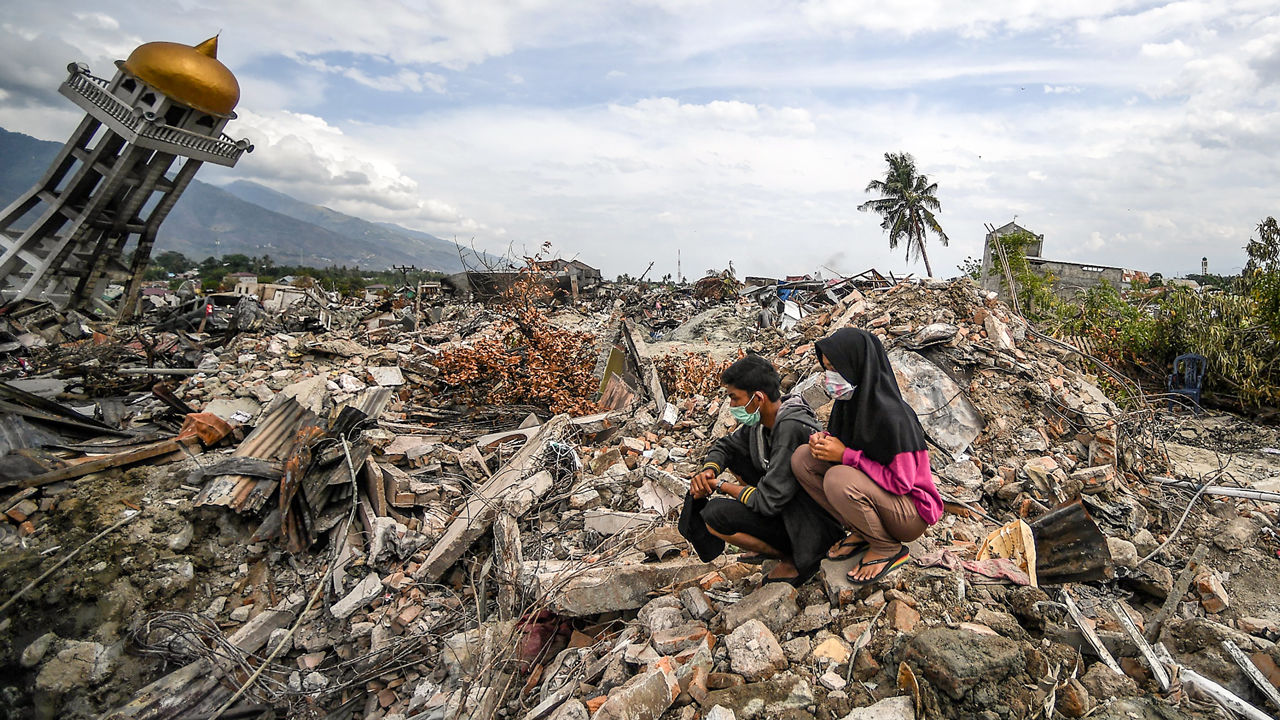
After an earthquake
- Stay calm. Help others if you are able.
- Be prepared for aftershocks.
- Listen to the radio or television for information from authorities. Follow their instructions.
- Place corded telephone receivers back in their cradles; only make calls if requiring emergency services.
- Put on sturdy shoes and protective clothing to help prevent injury from debris, especially broken glass.
- Check your home for structural damage and other hazards. If you suspect your home is unsafe, do not re-enter.
- Unplug appliances and broken lights to prevent fire starts when the power is restored.
- Stay away from brick walls and chimneys as they may be damaged or weakened and could collapse during aftershocks. Do not use your fireplace if your chimney has been damaged as a fire may start or gases could be released.
- If you have to leave your home, take your emergency kit and other essential items with you. Post a message in clear view, indicating where you can be found. Do not waste food or water as supplies may be interrupted.
- Do not light matches or turn on light switches until you are sure there are no gas leaks or flammable liquids spilled. Use a flashlight to check utilities and do not shut them off unless damaged. Leaking gas will smell like rotten eggs.
- If your home is equipped with natural gas: Call your gas provider immediately to report any concerns or if you smell gas (rotten egg smell). Shut off gas valve if you know how. Once the gas is turned off, don't turn it back on. Only a licensed gas technician can turn the gas on safely.
- If tap water is still available immediately after the earthquake, fill a bathtub and other containers in case the supply gets cut off. If there is no running water, there may be water in the hot water tank (make sure water is not hot before touching it) and toilet reservoir (not the bowl).
- Do not flush toilets if you suspect sewer lines are broken.
- Use extreme caution with hazardous materials or spills. When in doubt, leave your home.
- Check on your neighbours after looking after members of your own household. Organize rescue measures if people are trapped or call for emergency assistance if you cannot safely help them.
- If you have pets, try to find and comfort them. If you have to evacuate, take them to a pre-identified pet-friendly shelter.
- Place a HELP sign in your window if you need assistance.
Step 2: Make a plan
Every household needs an emergency plan. It will help you and your family to know what to do in case of an emergency. Remember, your family may not be together when an earthquake or other emergency occurs.
Start by discussing what could happen and what you should do at home, at school or at work if an earthquake strikes. To be prepared, make a list of what needs to be done ahead of time. Store important family documents, such as birth certificates, passports, wills, financial documents, insurance polities, etc. in waterproof container(s). Identify an appropriate out-of-town contact that can act as a central point of contact in an emergency.
Write down and exercise your plan with the entire family at least once a year. Make sure everybody has a copy and keeps it close at hand.
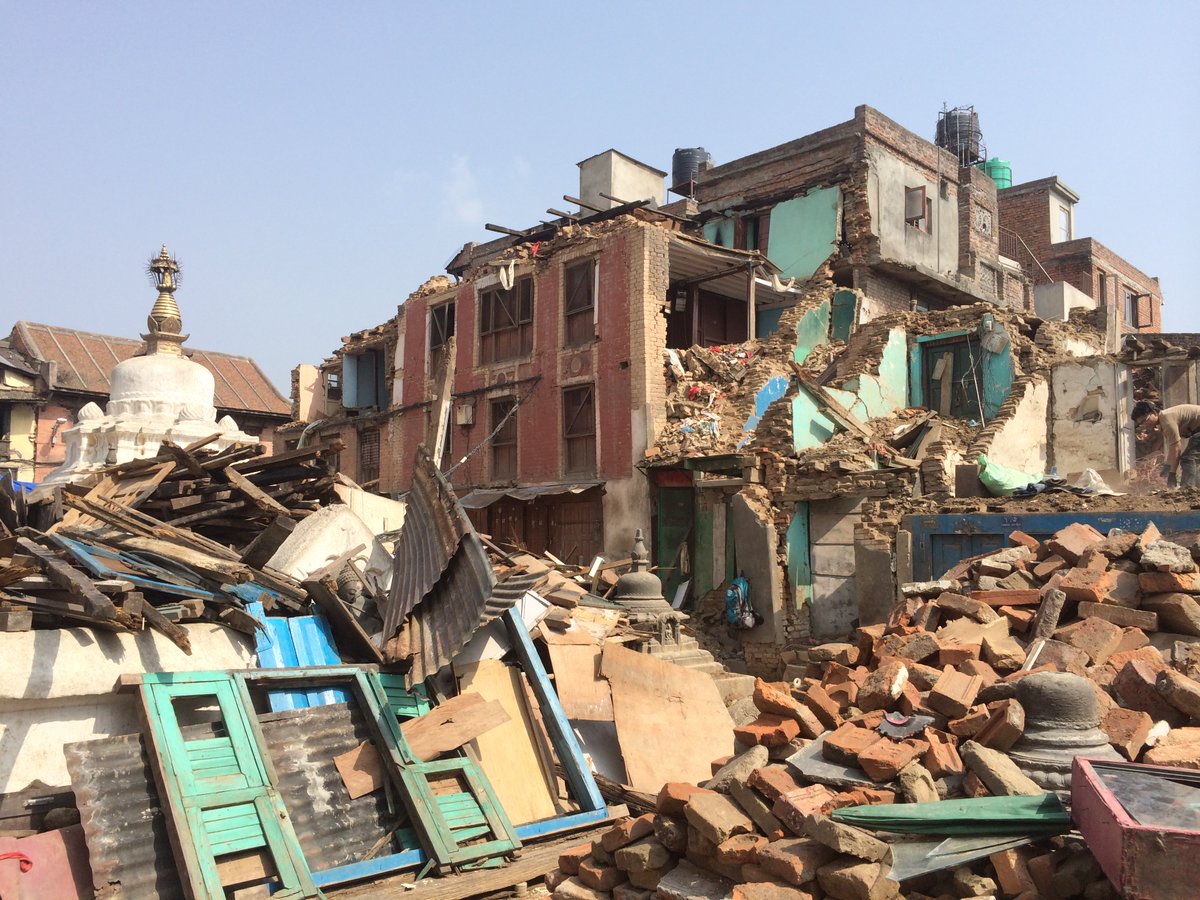
Step 3: Get an emergency kit
In an emergency you will need some basic supplies. You may need to get by without power or tap water. Be prepared to be self-sufficient for at least 72 hours.
You may have some of the items already, such as a flashlight, battery-operated radio, food and water. The key is to make sure they are organized and easy to find. Would you be able to find your flashlight in the dark?
Make sure your kit is easy to carry. Keep it in a backpack, duffel bag or suitcase with wheels, in an easy-to-reach, accessible place, such as your front hall closet. Make sure everyone in the household knows where the emergency kit is.
Basic emergency kit
- Water – at least two litres of water per person per day. Include small bottles that can be carried easily in case of an evacuation order
- Food that won't spoil, such as canned food, energy bars and dried foods (remember to replace the food and water once a year)
- Manual can opener
- Wind-up or battery-powered flashlight (and extra batteries)
- Wind-up or battery-powered radio (and extra batteries)
- First aid kit
- Special items such as prescription medications, infant formula and equipment for people with disabilities
- Extra keys to your car and house
- Cash in smaller bills, such as $10 bills and change for payphones
- A copy of your emergency plan and contact information
